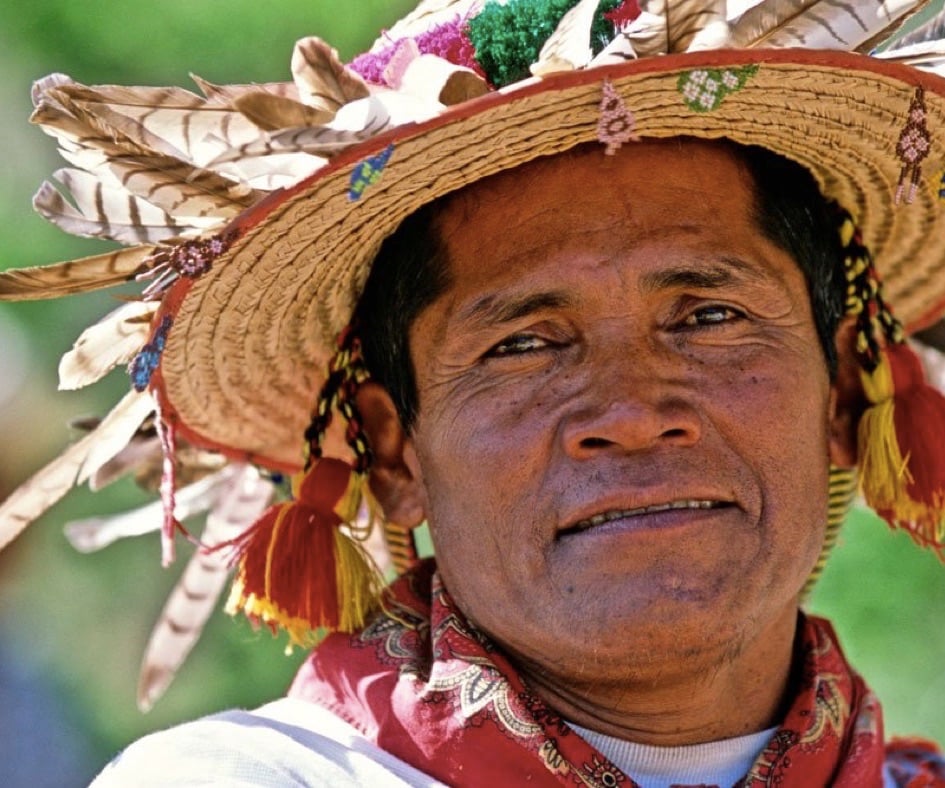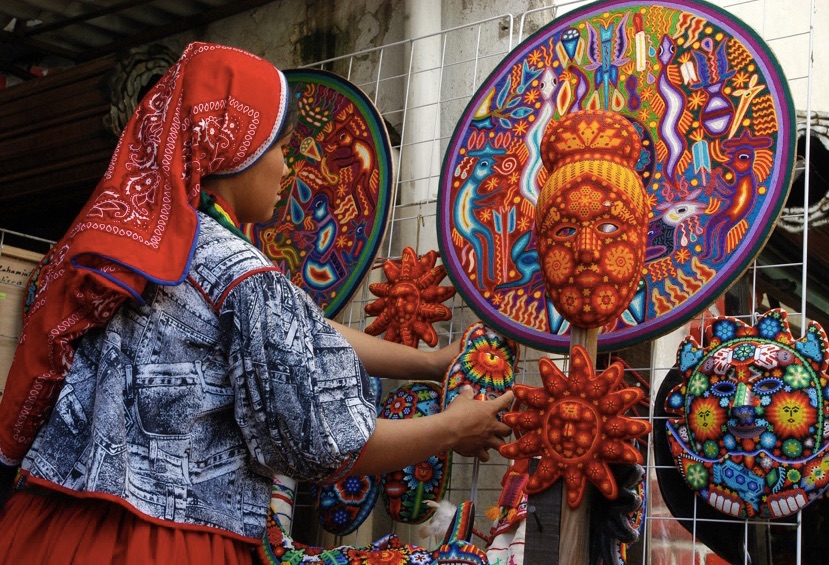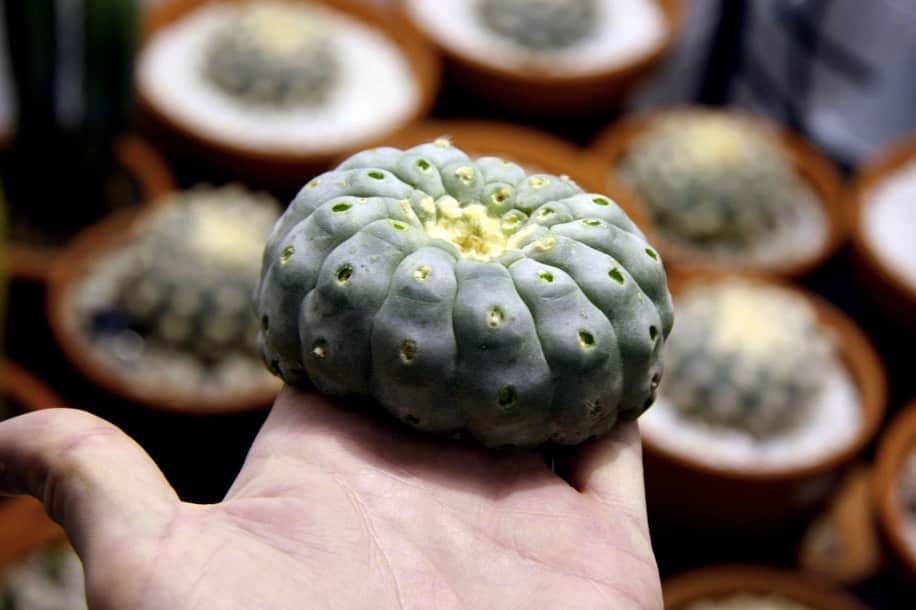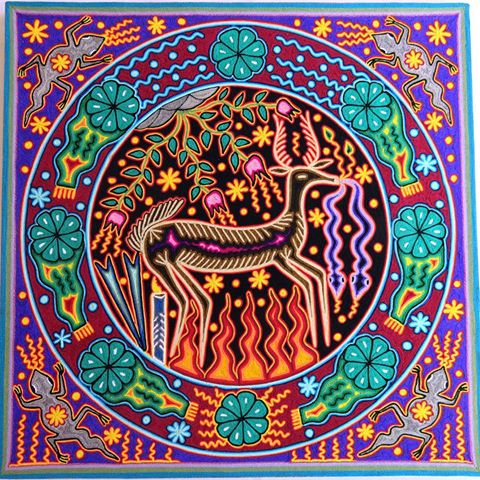Huichol People – An Ancient Unbroken Lineage of Healers

The Huichol People are rare when it comes to North American shamanic traditions. Unlike most indigenous populations of this region, which have undergone some degree of death, transformation or fragmentation post-Columbus, the Huichol maintain an unbroken lineage which extends back to the earliest roots of their tribal heritage.
The Huichol People refer to themselves as the Virarica, which roughly translates as “the healing people.” They are a small tribe of approximately 35,000 who live in central western Mexico in the Sierra Madre mountains. They are said to be the last remaining tribe in North America to have maintained their indigenous practices, though today they face numerous threats to their culture. Until recently, their choice to live in seclusion in a remote and rugged location, as well as their commitment to a nature-based lifestyle have kept them protected from outside cultural influences. Today they face struggle with the Mexican government and land possession, pressures to switch from corn farming to tobacco farming, and the incessant influence of missionaries attempting to convert them. Still, thousands of Huichol remain in their birth place, living and practicing in the ways of their ancestors, fighting to keep the flame of their lineage alive. Amazingly, the Huichol have no history of war. They are a peaceful people who have sustained themselves for generations in harmony with themselves and the land.
The wisdom teachings of the Huichol boils down to a simple yet deep reverence for nature and a ceremonial way of life that connects them to the spirit world. The purity and wisdom of the Huichol have made their influence on many Westerners seeking deeper healing and meaning in their lives. Several books by Westerners have been written about their personal experiences and journeys with the Huichol, including Tom Pinkson’s book The Shamanic Wisdom of Huichol. In it he recounts his life-changing transformational time spent with the Huichol, learning from the sacred peyote plant and the wisdom imparted to him by the Huichol shamans.
The Huichol Connection to Nature
The Huichol tradition is based on innate principles that connect us to the sacredness and wisdom of the animals, the sun, the plants, and the spirit realms. They rely on their relationship with nature to sustain themselves. For the Huichol, shamanism is a way of life; one that keeps them in touch with the sacredness of the earth.
A great deal of spiritual emphasis is placed on their relationship to corn, the blue deer, peyote, and the eagle. These four symbols represent important figures or deities which Huichol shamans commune with for wisdom, healing, and information. They believe that two opposing cosmic forces exist in the world: one represented by Tayaupa, “our father” Sun, and an aquatic one represented by Nacawe, the rain goddess. In their traditional rituals, they commune with these and other primal ancestor spirits as well as elements of the natural world.
Peyote Sacrament
Peyote (hikuri in Huichol) is the primary plant sacrament that Huichol use in their ceremonial prayer.
Peyote is a small cactus with psychoactive alkaloids, specifically mescaline, which in large quantities produce colorful and vivid hallucinogenic visions. For the Huichol, peyote plays a principle role in their cosmology, serving multiple functions within the tribe. Ceremonially, it acts as a gateway to the spirit realms, where they can commune with the gods. But peyote also has a long lineage of use as a traditional or “folklore” medicine and is commonly used by traditional people’s for things like influenza and diabetes. The Huichol are known to rub the juices of fresh peyote into wounds to prevent infection and to promote healing. Its profoundly alkalizing effect on the body makes it useful as an herbal application to help prevent and support the healing of various illness.
Once a year, the Huichol make a journey to Wirikuta where they go each year to collect peyote. Their pilgrimage takes place annually as a desire to return to the origins of life and seek healing and restoration. Upon arrival they begin their hunt, and when they find the first cactus it is shared by everyone in the tribe. They then harvest enough peyote for one year. This is the only trip they make for the whole year to supply their needs for peyote. They then ingest large amounts in ceremonial settings, where they can commune with ancestors spirits and deities, sing, heal, pray and weep.
The Brightly Colored Beauty of Huichol Peyote Art
You may have seen Huichol art in specialty native art stores, tribal shops, or other random and unexpected places. I was recently at a Mexican restaurant in Maui when a brilliant Huichol yarn piece struck me from across the room. The beautiful brightly colored depictions of animals, beings, energies, and of course, peyote have seeded their way around the world. After their communion with peyote, the Huichol will create the bead and yarn art inspired by their visionary experiences. Once you get past the sheer admiration of the dazzling beauty of the bright colors and patterns, you can usually pick out some common symbols in Huichol art. Each art piece reflects a wisdom teaching from their culture, or some aspect of the peyote medicine. In a given Huichol art piece, you’re likely to spot a colorful button (a depiction of the peyote cactus), an image of the blue deer (intermediary with the gods), the eagle (messenger spirit), or maize (both literally and symbolically an image of sustenance).
Their native art is one of the ways the Huichol are resisting the inhumane conditions of tobacco farming, and providing healthy sustenance for themselves. Non-profit organizations such as The Huichol Center have helped to provide alternatives to the Huichol people, providing them food, aid, shelter and artist training as an alternative to working in the harmful conditions of tobacco fields. In this way, art becomes not only a way of expressing their spiritual tradition, but also a means for sustainability for the future of the Huichol people.
Thanks to the Huichol people and their ability to sustain an unbroken connection to their ancestral ways, we have an opportunity to learn from their practices and teachings. Their profound connection to the land, the sacredness of nature, and shamanic communion with plant spirits is knowledge and wisdom the Western world is greatly in need of.




How far from Sayulita are the Huichol if we might visit a shaman?
I visited their booth at the Folk Art Festival in Santa Fe and was deeply moved by the beauty and colors of their amazing culture and art. Fascinating!